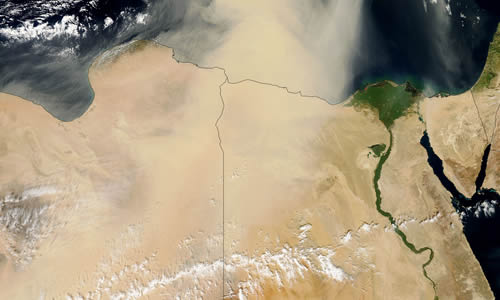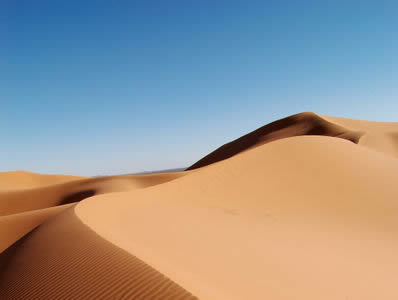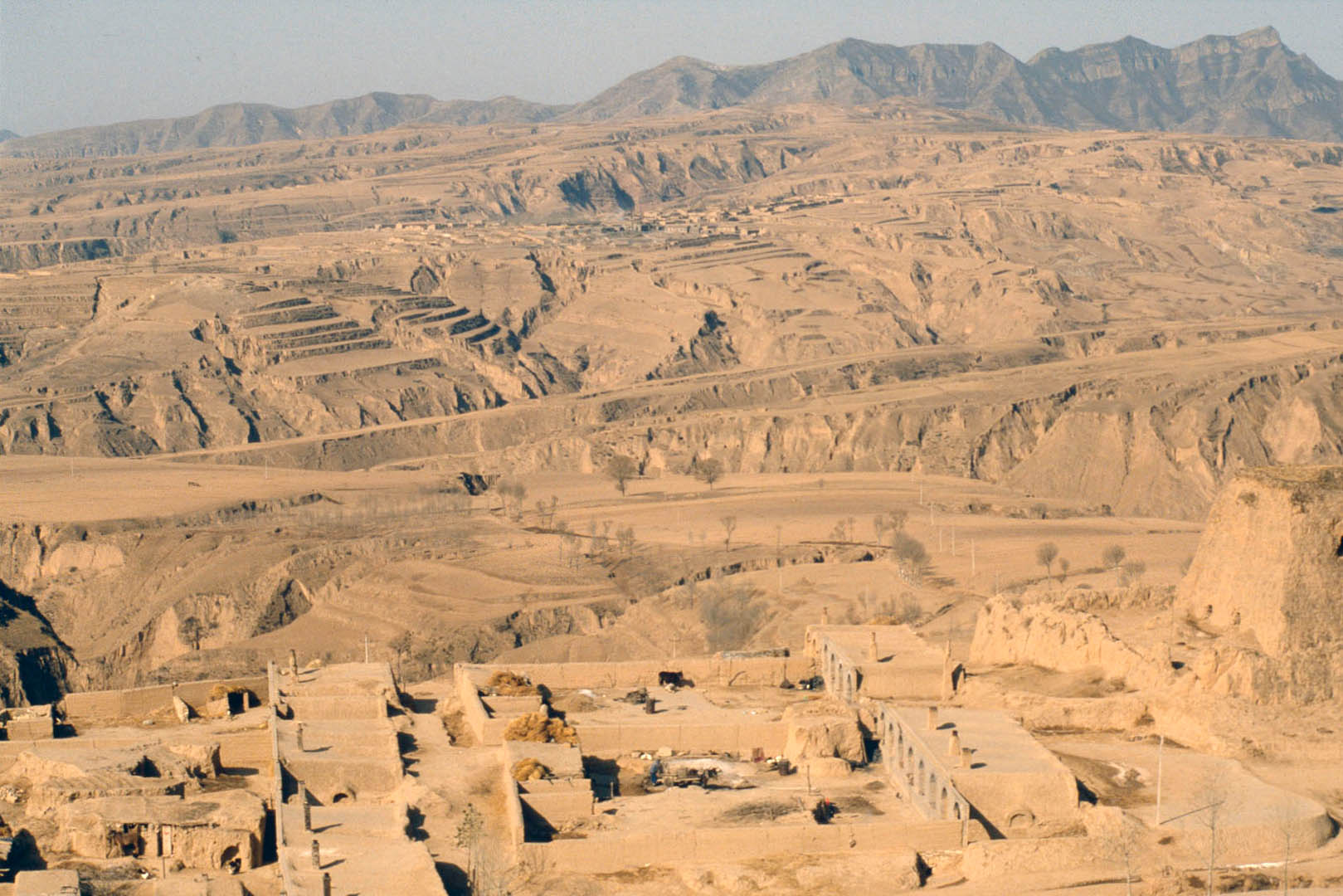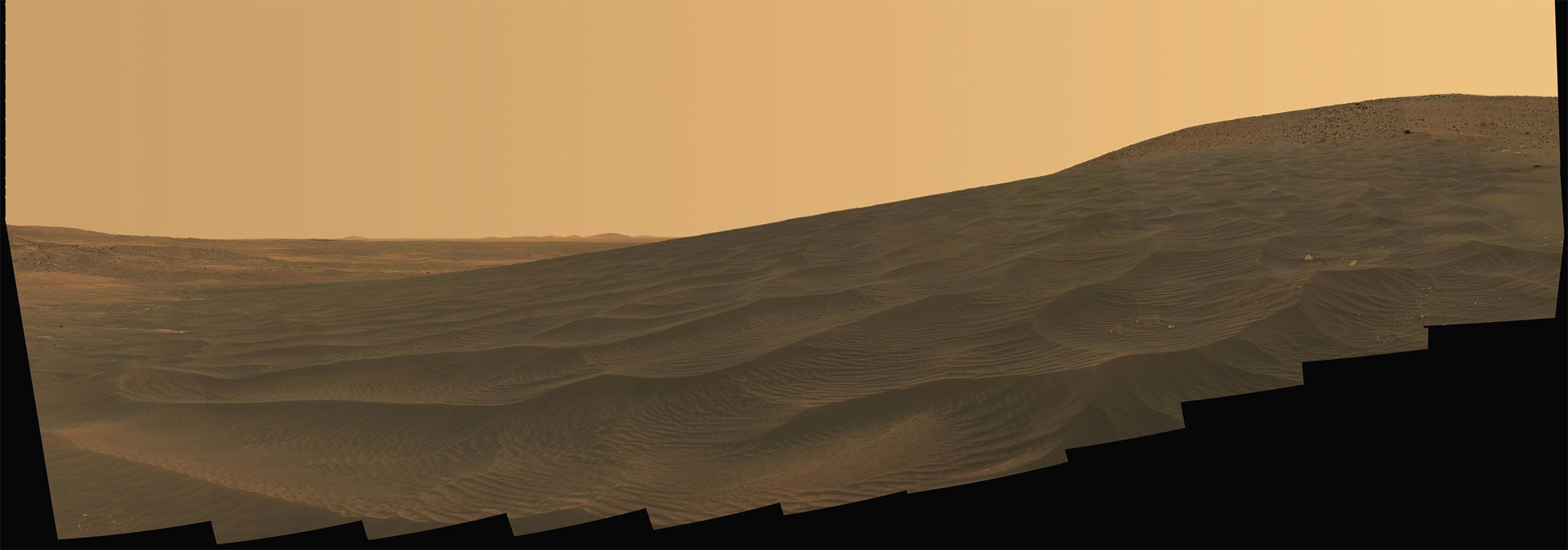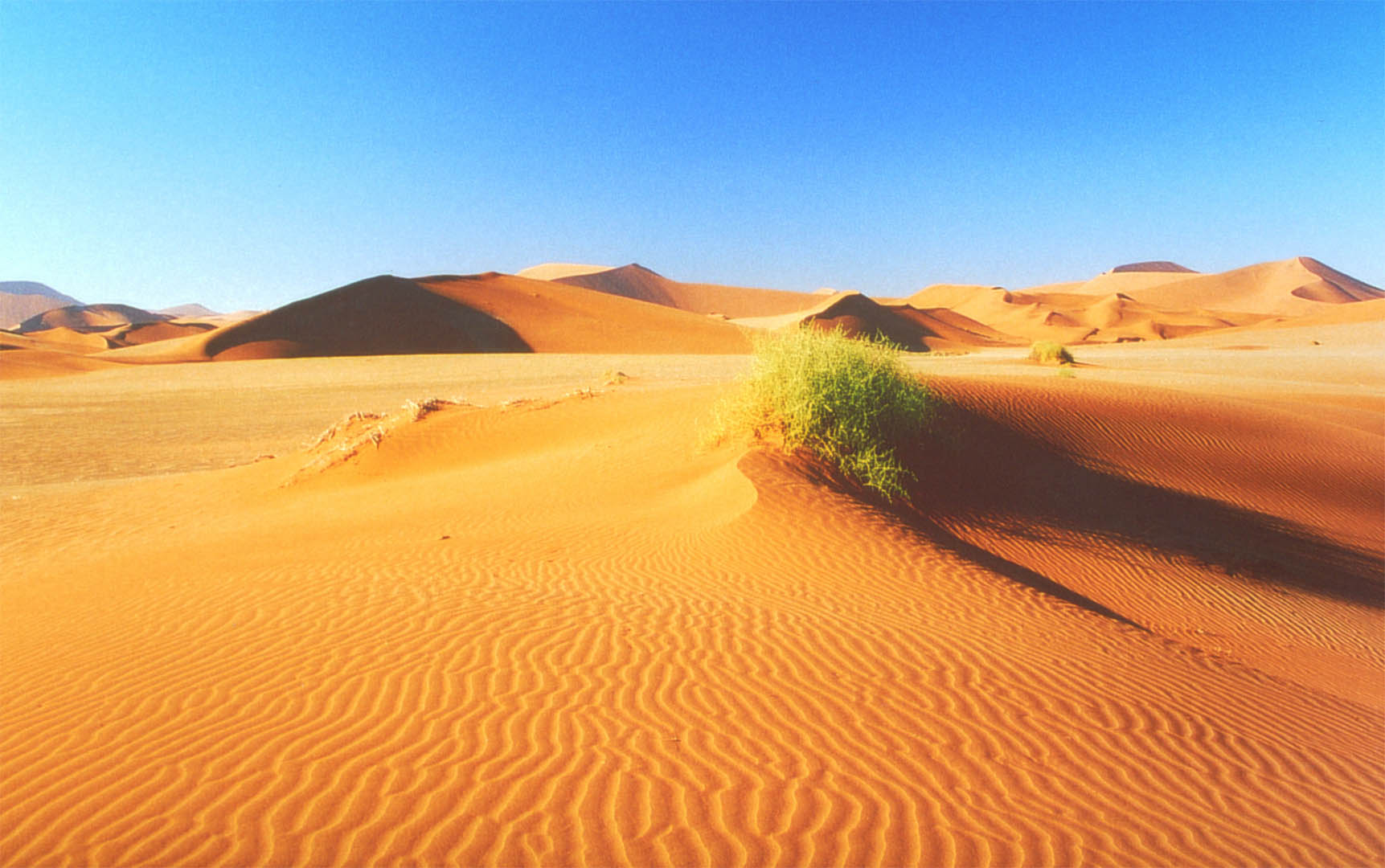D4-3
Wind Deposition
Wind erosion is not the only aeolian process that can affect the landscape. Deposition of sediment by the wind when its velocity decreases also contributes to the formation of unique landforms. Wind deposition leads to two major kinds of landforms.
- Dunes: Dunes represent the most recognizable form of wind deposition. A dune is a mound of windblown sand. A dune begins to form when windblown sediment meets an obstacle such as a rock or a piece of vegetation. This obstacle slows the wind and sand begins to accumulate on the far side of the obstacle. This pile of sand will build up over time and will assume a profile characteristic of sand dunes. The side facing the wind gradually builds up to a longer sloping surface while the side away from the wind will have a much steeper surface.
- Loess: Windblown sediment sometimes travels great distances before it eventually settles back to the Earth. Over time, this sediment can settle into thick layers of windblown material known as loess. Loess is extremely fertile because it is rich in nutrients and minerals.
Aeolian Mars
Aeolian processes are not restricted just to Earth. Numerous spacecraft have returned pictures of dune formations on the surface of Mars. We now know that dunes are a common landscape feature across the surface of Mars.This 160 degree panoramic view of sand dunes on Mars was taken by the Mars Exploration Rover Spirit on January 1, 2006.
The Largest Sand Deserts
Sand deserts are primarily formed by the deposition of sediments from wind erosion. The following chart lists the four greatest sand deserts of the world. Click on each desert name in order to visit it.
| Desert | Location | Size |
| Sahara Desert | Africa | 9,100,000 km2 (3,500,000 miles2) |
| Arabian Desert | Middle East | 2,300,000 km2 (900,000 miles2) |
| Kalahari Desert | Africa | 712,000 km2 (275,000 miles2) |
| Great Victoria Desert | Australia | 339,000 km2 (131,000 miles2) |
